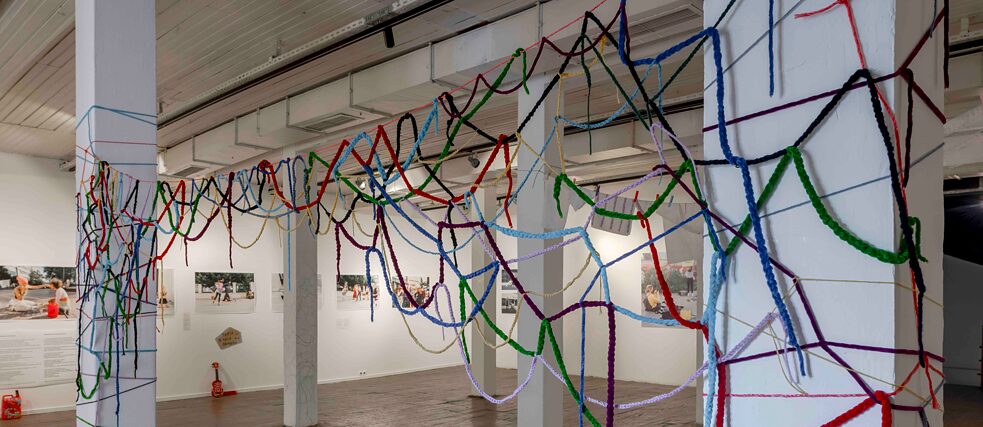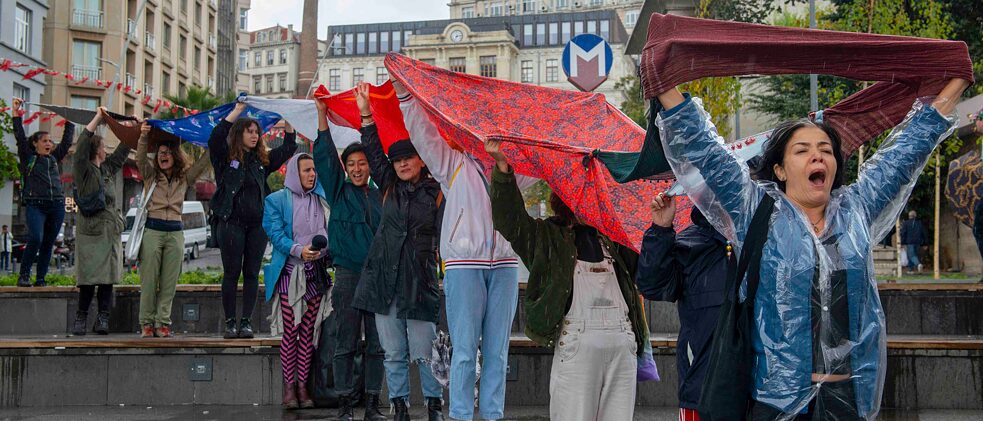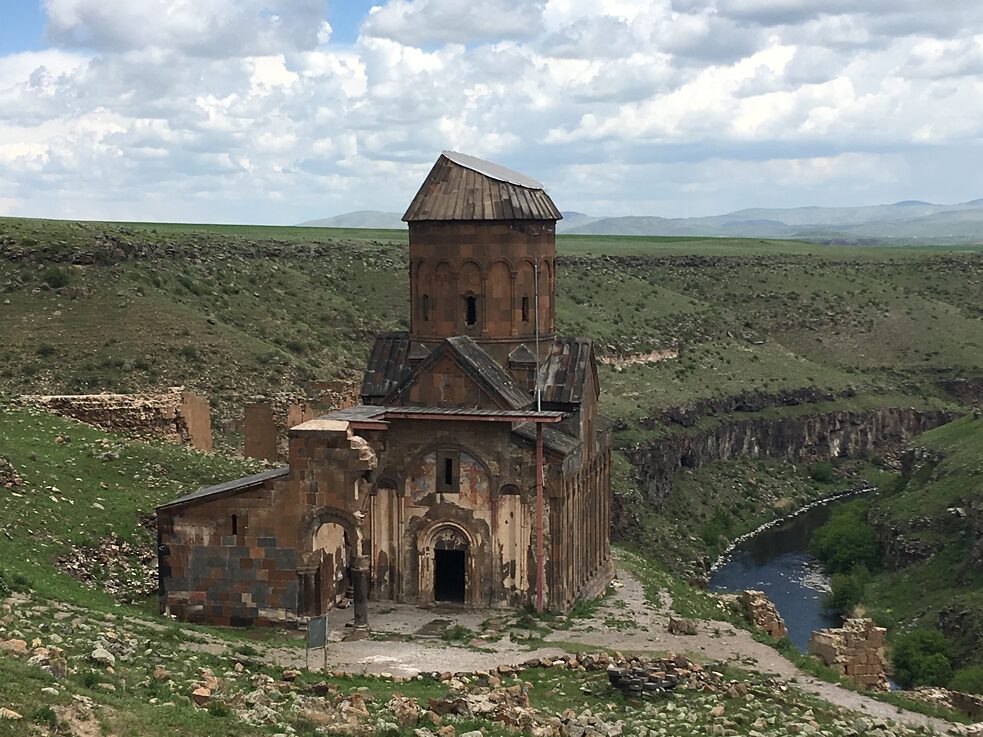Interview with Alumni Katerina Poladjan and Tanja Ostojić
Faraway, so close!

Residence programs enable artists and cultural practitioners to live and work in another country for a period of time. In this way, the Goethe-Institut promotes sustainable international cultural exchange - often even beyond the residence itself.
Katerina Poladjan and Tanja Ostojić were scholarship holders at the Tarabya Cultural Academy and were supported by the Alumni Fund beyond their scholarship period. In the following interview, they talk about their experiences in Istanbul and the projects they worked on.
Tanja Ostojić, from 2009 to 2022 you worked on the art project "Mis(s)placed Women?". What is it about?
"Mis(s)placed Women?" consists of performances, workshops and an online platform that includes contributions from over 170 people from six continents - people who mostly identify as women. The project participants stage everyday activities around the theme of displacement and address issues of migration, climate change, feminism, queerness, gentrification, inclusion, accessibility, power relations and vulnerability, especially in relation to female and transgender bodies.
What role did the city of Istanbul play in your project?
Istanbul was a real catalyst and challenging playground for this project. Together with the international performance art platform Performistanbul and the Tarabya Cultural Academy, we produced a one-hour video documenting collective and individual performances, reflections and the process of the workshop "Mis(s)placed Women?" (2021). The Istanbul course of the project was marked by massive police presence, but also by appreciative reactions from the audience on the street and the nine local participants who supported each other in an amazing way.
Which performances and workshops did you realise in Istanbul?
The workshop "Mis(s)placed Women?" used the principles of art as social practice by exploring possibilities for temporary interventions in different public spaces and empowering participants through a block seminar.
A year later, in September 2022, a public programme of live discussions, performances and an international community gathering of participants from Germany, the UK and Turkey took place at the Depo Cultural Centre and in downtown Istanbul as part of the project's retrospective exhibition. This workshop and performance series was characterised by collective actions and improvisations, but especially by actions performed in solidarity with the women leading the feminist revolution in Iran.
You were a scholarship holder at the Tarabya Cultural Academy in 2021. What is the best memory of your stay?
The memories are still very fresh and I hope to come back soon. Wonderful people I was able to meet and talk to, breathtaking views from the historic residence towards the Bosphorus and the garden, , the city of Istanbul itself with all its contradictions and complexities, meetings and garden parties, performances, great working conditions, interesting excursions and research trips....
How has the Alumni Fund supported you in your work?
How has the Alumni Fund supported you in your work?
With valuable contacts to different actors in Istanbul's art scene and with the support of the co-production grant, for which I am very grateful, I worked on editing the exhibition reader in English and Turkish and on producing the retrospective project exhibition entitled "Tanja Ostojić: Mis(s)placed Women? 2009-2022, A collaborative Art Project", which took place at Depo Istanbul in autumn 2022. The exhibition was a side event of the 17th Istanbul Biennial.
With the support of the Tarabya grant, we were able to print exhibition photos, fund the translation of all exhibition videos into Turkish and successfully collaborate with Depo, which was an ideal venue for this feminist, socially engaged project due to its outstanding political profile and commitment to civil society.
 Protest Scarves action in solidarity with Women Revolution in Iran "Mis(s)placed Women?" Live events, interventions in the public space, Istanbul, September 2022 | Gülbin Eris © Tanja Ostojic
Protest Scarves action in solidarity with Women Revolution in Iran "Mis(s)placed Women?" Live events, interventions in the public space, Istanbul, September 2022 | Gülbin Eris © Tanja Ostojic
At the beginning of my writing there is a feeling, an idea, a sketch, a theme, a sound, here a place, there the vague outline of a character. I sketch, research, experiment, discard. But I knew early on that an important part of the novel would be set in Turkey. So I sat in the historic summer residence of the German ambassador and wrote, knowing that during the First World War a German diplomat sat in the same place and reported the crimes against the Armenians to Berlin. The novel is not only about the restoration of old Armenian manuscripts, but also about the genocide of the Armenians in 1915. It was important for me to research this topic in Turkey. I was able to build up an emotional distance, which was very important so that I wouldn't be overwhelmed by my own feelings. I could not have written this novel in Armenia.
What research trips were you able to take in Turkey?
I made two trips. The first trip to Ordu, to the place where my grandfather was born. Parts of the novel are set there. I looked for the "leftover" Armenians in Ordu, talked to many people and soaked up the atmosphere of the place. I was even able to find the school my grandfather attended.
The second trip I took was to Kars and the Georgian border. These experiences also went into the book.
 Eine Kirche in der ehemaligen armenischen Hauptstadt Ani | © Katerina Poladjan
Eine Kirche in der ehemaligen armenischen Hauptstadt Ani | © Katerina Poladjan
I experienced great support on both trips. I would not have been able to undertake these trips alone. If only because of my language barrier. In Ordu, Çiğdem İkiışık, a programme coordinator at the Cultural Academy, was with me. She conducted the talks with me and translated for me in parallel. I was able to take notes immediately and in the evening we discussed and analysed the experience together. That was a great help.
I travelled to Kars with the photographer Erhan Arik. He also translated for me. He also comes from this border region and through him I was able to get to know the village, which is only separated from Turkey and Armenia by a narrow river. This village plays a decisive role in my novel. I would never have been able to undertake this journey alone either. There is a big difference between going there as a tourist and going with people who are connected to the country and region you are researching.
My novel would have been different if I hadn't made those trips.
The Tarabya Cultural Academy is a residence program for artists of various disciplines. Its aim is to contribute to German-Turkish cultural exchange. The Tarabya Cultural Academy in Istanbul is an institution of the Federal Government and part of the cultural work of the German Embassy in Turkey; curatorial responsibility is borne by the Goethe-Institut. In order to ensure this cultural exchange beyond the duration of the scholarship, the Tarabya Cultural Academy has been announcing an alumni fund for the promotion of projects twice a year since September 2019, to which former scholarship holders of all disciplines can apply.